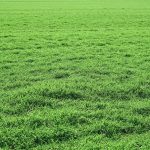As environmental concerns continue rising, many homeowners seek sustainable solutions for their homes. One area where sustainable options are gaining popularity is lawn care. Traditional grass lawns require significant water usage, fertilizers, and pesticides, making them environmentally harmful. Fortunately, there is a solution – artificial turf. In this article, you’ll explore the benefits of artificial turf as a sustainable choice for a healthy, eco-friendly lawn.
The Environmental Benefits
Unlike traditional grass lawns, artificial turf requires no watering, pesticides, or fertilizers, making it an eco-friendlier option. In addition, it is typically made from recycled materials, such as old tires and plastic bottles, which reduces waste and lowers its carbon footprint. This means it can significantly reduce a homeowner’s environmental impact, making it an ideal choice for those seeking to minimize their carbon footprint.
Reduced Water Usage
Water conservation is an excellent option in areas where it is a concern. Traditional grass lawns require significant amounts of water to maintain their lush green appearance, particularly in areas with dry climates. In contrast, it requires no watering, making it a perfect option for homeowners in water-scarce regions.
Lower Maintenance and Cost
Another advantage is its low maintenance and cost. With traditional grass lawns, homeowners must invest significant time and money in mowing, fertilizing, and watering. In contrast, it requires minimal maintenance and can last for up to 25 years, making it a cost-effective solution over the long term.
Increased Durability
It is also incredibly durable, making it suitable for high-traffic areas. Unlike natural grass, which can be easily damaged by foot traffic, it can resist heavy use without showing signs of damage. This makes it an excellent choice for families with children or pets who need a durable lawn to play on.
Improved Aesthetics
In addition to its environmental benefits, it also has aesthetic advantages over natural grass. With this, homeowners can achieve a perfectly manicured lawn all year round, regardless of the climatic conditions. Unlike real grass, which can become brown and patchy during droughts or cold weather, it remains green and vibrant year-round, giving homeowners an attractive and consistent lawn.
Health Benefits
Artificial turf also provides various health benefits, particularly for those with allergies or asthma. Traditional grass lawns can exacerbate allergy symptoms, particularly during the spring and summer, when grass pollen is prevalent. In contrast, artificial turf does not produce pollen, making it a healthier option for allergy sufferers.
Additionally, turf does not require the use of pesticides, which can be harmful to human health. Traditional grass lawns often require pesticides to control pests and weeds, exposing homeowners to harmful chemicals. With turf, homeowners can have a healthy, pest-free lawn without the need for toxic chemicals.
Installation
Installing it is a simple and straightforward process. The first step is to prepare the area where the turf will be installed. This typically involves removing grass and debris and ensuring the soil is level and well-drained.
Next, a layer of crushed stone is typically laid down to provide a stable base for the turf. The turf is then rolled out and secured with stakes or adhesive. Finally, the turf is filled with sand or rubber to provide cushioning and stability.
Conclusion
In conclusion, artificial turf is a sustainable and eco-friendly option for those seeking a healthy and attractive lawn. With its reduced water usage, low maintenance, and long-term durability, artificial turf is an ideal choice for homeowners who want to reduce their environmental impact while still enjoying the benefits of a beautiful lawn. It also provides a safe and comfortable surface for children and pets to play on without worrying about pesticides or other harmful chemicals.








